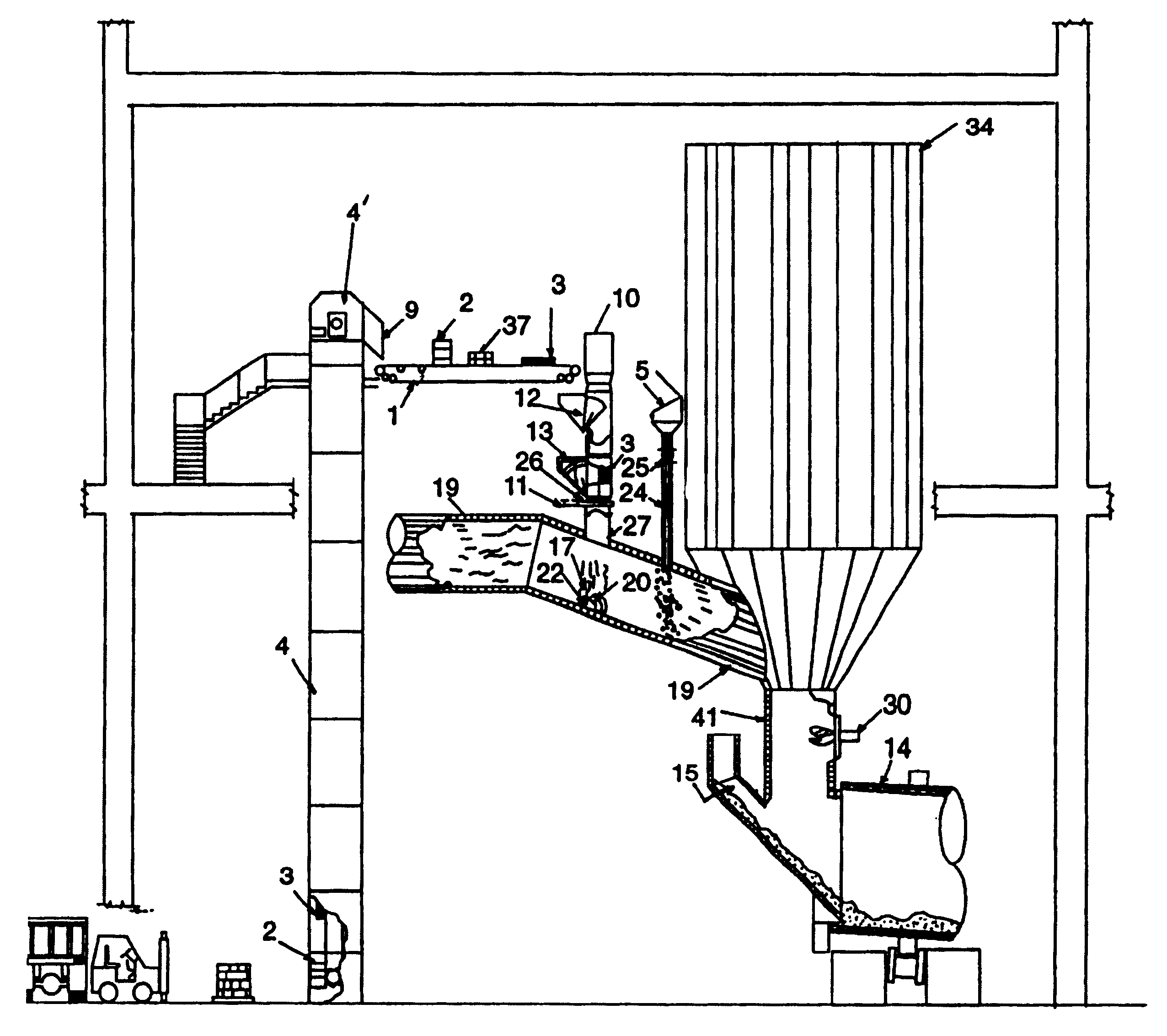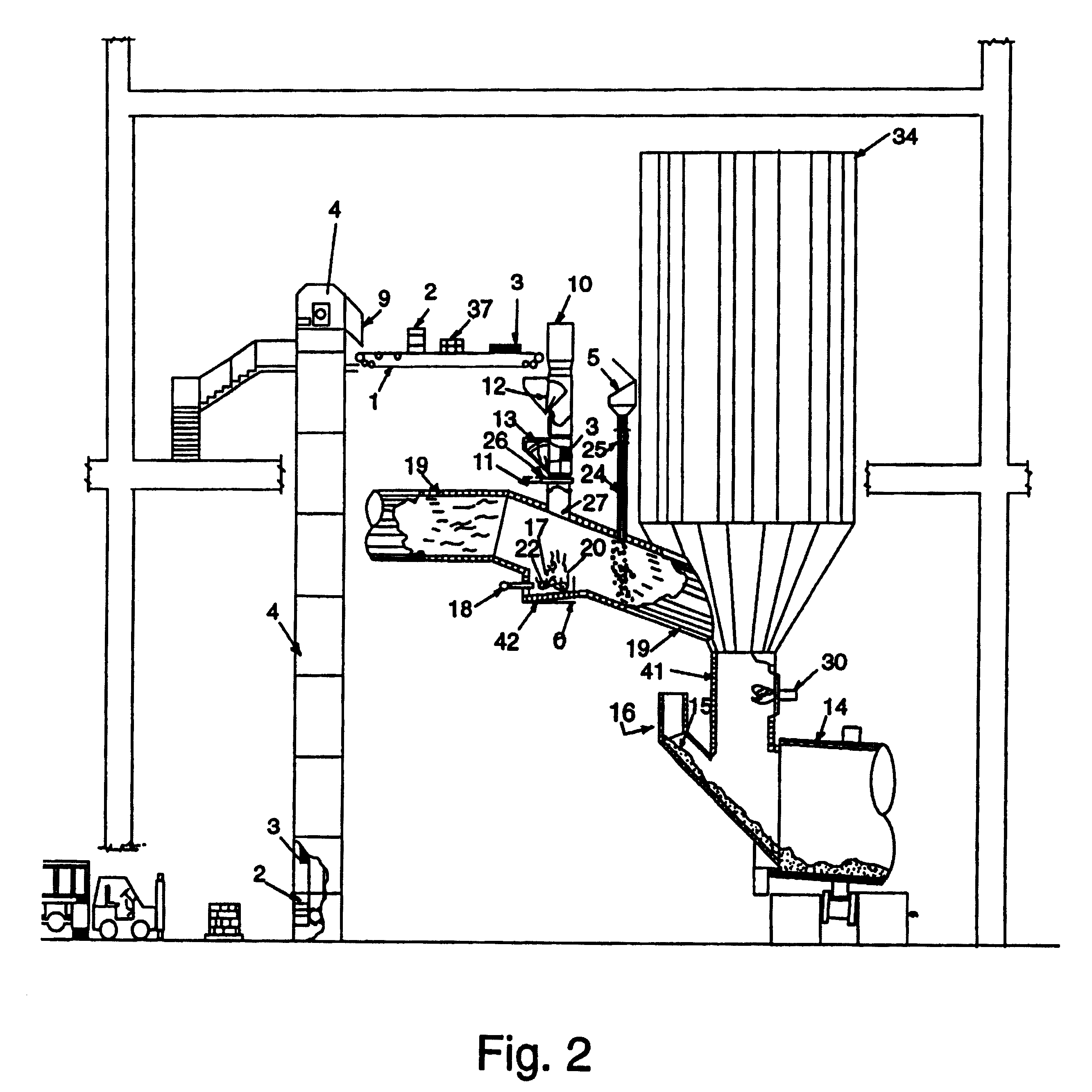Method and apparatus for recovering energy from wastes by combustion in industrial furnaces
- Summary
- Abstract
- Description
- Claims
- Application Information
AI Technical Summary
Benefits of technology
Problems solved by technology
Method used
Image
Examples
Embodiment Construction
A detailed description of this invention will be provided hereafter, and reference will be made to drawings above, in which arabic numbers have been included to identify the elements of parts of the novel apparatus, and such numbers of those parts coincide with the description following.
As shown in FIG. 1, in accordance with the novel method and apparatus of this invention, the bulk or crushed solid material that is to be used for recovery of its energy by means of combustion, is batch fed to the tertiary air duct 19. The solid material (such as a container 2 or tire 3) is placed inside an elevator 4 and elevated thereby to point 4' thereof to an unloading station 9. There it is loaded onto a belt conveyor 1, that feeds the material (shown as container 2, tires 3, or even bales of solid material 37) to a first vertical feed hopper 10. At the bottom of the hopper 10 are some gates 12 and 13, used to control the feed of the solid waste material, and which serve also to isolate the atm...
PUM
| Property | Measurement | Unit |
|---|---|---|
| Fraction | aaaaa | aaaaa |
| Angle | aaaaa | aaaaa |
| Distance | aaaaa | aaaaa |
Abstract
Description
Claims
Application Information
 Login to View More
Login to View More - R&D
- Intellectual Property
- Life Sciences
- Materials
- Tech Scout
- Unparalleled Data Quality
- Higher Quality Content
- 60% Fewer Hallucinations
Browse by: Latest US Patents, China's latest patents, Technical Efficacy Thesaurus, Application Domain, Technology Topic, Popular Technical Reports.
© 2025 PatSnap. All rights reserved.Legal|Privacy policy|Modern Slavery Act Transparency Statement|Sitemap|About US| Contact US: help@patsnap.com



